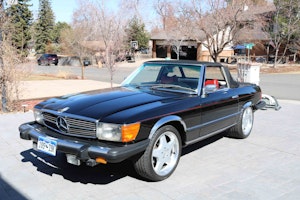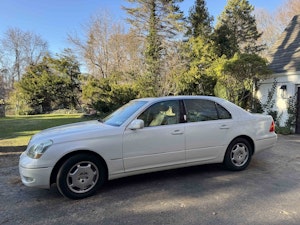Media | Articles
Behold the McLaren F1 with single taillights
The blue-collar origins of supercar lights are always interesting. Small-volume manufacturers have to use common parts that, hopefully, not only work with their design but also cost pennies compared to the bespoke pieces commissioned by major OEMs. The 1992–98 McLaren F1’s bodywork features twin round headlight units and dual round taillights on either side. The history of the colored lenses involved there is worth a peek.
Once Gordon Murray poached Peter Stevens from Lotus, the designer came up with a bunch of sketches for the F1. At least one featured single taillights:
20191213192009)
On the 23rd of December, 1992, Gordon Murray booked a 3:00 p.m. flight to South Africa. Before getting airborne, however, he was determined to drive the F1 for the first time, despite the fact that, with its broken clutch, the XP1 had only a single gear to offer. With the issue duly noted, the prototype got pushed onto the tarmac of McLaren’s top-secret Genesis Business Park, showing off two round taillights on each side, each with integrated indicators.
Marketplace
Buy and sell classics with confidence



After being rolled at high speed on March 24, 1993, what was left of the McLaren F1 XP1 burned to the ground in the Namibian desert. The second F1 prototype, XP2, was used for crash tests, and I have yet to see a rear shot of that blue wonder to confirm its design. This brings us to the XP3, the personal prototype which Gordon Murray only sold recently.
Seen here at the Goodwood Circuit on May 20, 1993, the F1 XP3 displays a number of features that didn’t make it into production. For the finalized design, the fog lights had to go to improve cooling, and the prototypes’ turn indicators were replaced by the contemporary Lotus Elan’s thinner plastic ones.
20191213192124)
Mark Roberts, McLaren’s ninth employee and current head of design operations, once told me that after the XP1, the idea was to go with single taillights on each side. This must have been because if you look at the rear of the XP1, with its integrated turn indicators, all four units did the same job—and such excess in weight was not allowed under Murray’s watch.
So then came the single-taillight setup on the XP3, which you could ask Mika Häkkinen about.
20191213192101)
On page 161 the book Driving Ambition reveals that on August 8, 1993, the McLaren F1 XP3 achieved a record 231 mph at Nardo, driven by Jonathan Palmer. Evidently, the silver car did that with just two taillights onboard.
20191213191936)
Then, it was discovered that regulations wouldn’t allow for all those electrical functions to be under a single housing, and so McLaren went back to the dual round design on each side, cutting the grille and changing the colors of lights themselves to distinguish them. The winner of the production contract was Italy’s Cobo, the company which at the time already supplied the same taillights to Lamborghini, for its Diablos.
20191213191842)
Even without a rubber seal on the road cars (F1 GTRs had black “Shockmount” O-rings), these humble Cobo units stood the test of time, staying sufficiently orange and red to make sure you know whether the $20-million McLaren F1 in front of you is about to turn or come to a sudden halt.
20191213191914)
Three decades after the original central-seater supercar debuted in Monaco, Gordon Murray’s McLaren F1 successor, the T.50, will debut with a 700-horsepower naturally-aspirated Cosworth V-12, a target weight of 2160 pounds, and ground effects controlled by a 15.7-inch fan, ala Brabham BT46B. The Gordon Murray Automotive T.50 will also feature a single taillight on each side.
20191213191906)









